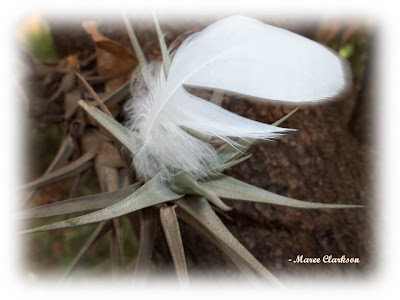(A warning: If you have any propensity towards cactus love to begin with, moving to the desert will increase it exponentially!)
A long-standing passion - a passion most people find utterly boring and something only a cactus-lover will understand - THE LOVE OF CACTUS. So maybe this post is not for you, but if it is, read on!
It all started in the 1980's, when my (well-meaning) father gave me three Echeverias in a pot. I couldn't turn them down and hurt his feelings, but I had NO interest in those three succulents! When I got home, I hastily stuck them in the ground in some far-away corner in the garden, hoping they would disappear.
Echeveria glauca
A few months later I was working in the garden and decided to do something about that 'little lost corner' of my garden. Upon investigating, to my surprise, the three Echeverias had multiplied and there were dozens of them, all displaying the most gorgeous little pink bell-shaped flowers on long stalks. I was hooked! I mean, forgotten and neglected, NO attention whatsoever, yet they blossomed forth with the most gorgeous gifts. I felt so guilty I almost cried!
Now those spiky flat coins and furry ground knobs make me go nuts. Finding a new specie not in my collection is like striking gold - my stomach churns, my heart starts pounding and I just HAVE to have it!
I can spend hours fiddling with my cacti and succulents, removing seedlings and siblings from the garden and potting them in terracotta pots, I have displays all over the house, on various patios and in my garden shed. You'll find them on window sills, tree stumps, on little tables, in terracotta pots, jam tins, glass jars, buckets, cracked coffee mugs, on wooden palettes, on my desk, next to my computer, in fact, anywhere there is a flat surface! And heaven forbid I come across someone selling them at a market stand, I could buy up all their stock!
'They' say "It takes real guts to love a cactus!", but I have found it the easiest thing in the world!
I need to get some more!
::
Prickly... (Cactus Echinopsis oxygona) - a Dung Beetle brooch hand-crafted with black glass jewels, silver wire and silver solder, sitting on a little piece of driftwood . bird's nest in Abelone shell (Perlemoen)
::
and smooth.... (Echeveria elegans)
::
prickly... (Aloe ciliaris)
::
and smooth... (Haworthia Cymbiformis)
::
prickly... (Aloe ferox)
::
and smooth... (Gasteria)
::
prickly and smooth... a collection on a wooden palette on my Patio. Rat-tail cactus far left and front right - Old Man's beard behind that, Aloes and Echeverias in metal tub.
::
mostly smooth... Gasterias, Echeverias and some cacti on a Vintage Pine table in my Flower Room
::
prickly... My latest acquisition - A cactus in an enamel bowl surrounded by four Haworthias and a tiny succulent peeping through the pebbles
::
smooth - Echeveria glauca in an old concrete cast
::

































